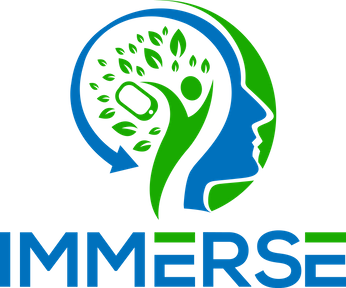Data Management Team
Universitätsklinikum Erlangen &
Friedrich-Alexander-Universität Erlangen-Nürnberg
31/01/2024
Handling IMMERSE research data; akin to preparing a stew?
IMMERSE (Implementing Mobile MEntal health Recording Strategy for Europe) uses the Experience Sampling Methodology (ESM) as a central method to achieve the goal of moving mental health care in Europe towards authentic person-centred care. ESM is a structured diary technique that places the service user at the heart of their treatment. Within IMMERSE we aim to further transform ESM into an innovative, clinical digital health tool, Digital Mobile Mental Health (DMMH), in close collaboration with stakeholders while also specifically evaluating the implementation of this tool in routine mental health care in four countries in Europe.
Picture yourself as a culinary maestro in the kitchen, someone worthy of being called a Chef. Suppliers from four countries and eight different regions bring their goods to you. It is your task to use all their ingredients to cook one delicious stew. You peel, dice, and slice away at potatoes, you wash and chop up leek, and you season some delicious (vegan) bacon. At the right time and temperature, you add the ingredients to the pot. Now, why this tale? Well, data management and integration in IMMERSE is in a way very akin to preparing a stew as described in the tale above. We have data coming in from four countries and eight different regions and we have to handle every data package in the right way to contribute them to one common DMMH database.
Our data suppliers are:
- Patient study data from electronic case report forms (eCRFs).
- Sensory data from mobile devices, like activity data collected via GPS.
- Short in-the-moment questionnaires (ESM data) that are collected via an app on the patients’ mobile phones.
All data must be as complete and error-free as possible before we can add it to the database, which we ensure by scanning the data across several stringent data quality checks. These checks allow on-time intervention while the data is entered but require complex and individualized programming scripts. In the various data sources, e.g., the identifiers of the respective participants must be available in a specific format so that they can ultimately be used to integrate the data sources into the database. As another example, the completeness of the eCRF data is determined using various metrics so that incomplete records can be corrected in a timely manner by clinic staff to maximize the number of complete records.
Akin to preparing a stew, but still different
While soup can be stored in any type of pot, our data cannot be stored in just any type of database. We handle sensitive health data, so we need something special. That something special is our database located at the University Hospital Erlangen. There, it is protected against unauthorized access (by accident as well as on purpose) by a range of measures such as firewalls and user administration. Relatedly, regular data backups on secure servers at the University Hospital Erlangen prevent data loss.
The aim of cooking a stew is to eat all the ingredients together. The aim of our database is to use the data for statistical analysis. However, not all analyses will use all the data in our database. Often, specific research questions translate to a need for specific subsets of our data. Hence, we design functionalities that allow us to segment our database. This means that we can provide researchers access to the subsets of data relevant to their research question, saving space on their hard drives, reducing processing time, and ecologically decreasing data traffic — ecological, as trafficking data costs electricity!
To use IMMERSE data as a researcher, you need to know that the database exists. You would also like to know what kind of data it contains (just as you might like to know the ingredients of the stew before you order it) and how and under what conditions you can use it. Therefore, we process the data from IMMERSE following the FAIR principles. This means describing and publishing the contents of our database in a standardized and structured way. It is like writing the menu for a restaurant. The menu tells you what you can order, what ingredients the dish contains, and what it costs.
To get the data into the database and then cuts of data back to the researchers, we also need to establish ways to process, share and transfer data securely across four countries and eight sites. In doing so, we have to ensure compliance with data protection and other legal regulations in addition to the establishment and maintenance of central IT infrastructure components.
To sum it up
We, the data management team, collect data from different sources.
We help to rate and improve the quality of the data.
We maintain the database and take care of the data.
We provide tools to export and transfer (subsets) of data.
We describe and publish the contents of our database.
We watch over the life cycle of the IMMERSE data...
…of four countries and eight different regions.
…with all the necessary carefulness for health data and by all applicable regulations.
This is not always an easy task, but we feel honoured to take it on, and we will master the challenge — like chefs mastering the preparation of an international stew.


